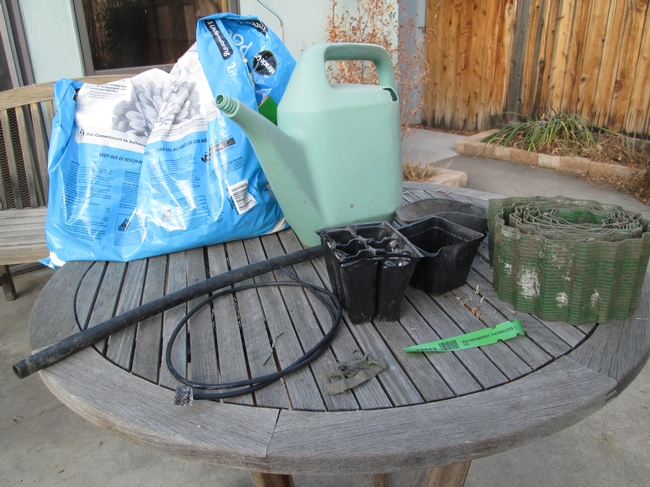Recently gardeners have become more aware of the importance of gardening sustainably, but while they might enthusiastically nurture worm bins under the kitchen sink, learn about the benefits of mulching, measure their greens and browns carefully when creating their compost piles and shy away from using peat moss, often scant attention is paid to other aspects of caring for our soils and the planet.
About to plant some seeds indoors I went to my stash of cell packs, carefully saved from previous plant purchases, only to find that they had been subjected to a blast of desert sun and had all partially melted. They were so distorted that I could not re-use them, and since that particular plastic is not recyclable in our area they ended up in the landfill. When I finally got my seeds planted and watered, I then discovered that the plastic seed tray leaked from a split in one corner.
Large sheets of plastic that I had used to solarize some newly landscaped plots were completely rotted by the ultra violet light disintegrating into messy shreds, and what does one do with drip irrigation tubing with clogged emitters? Although I can perhaps find a use for a few feet of it, the rest has to go to the dump. And then of course I will have to buy more in order to grow my vegetables.
As I tidy my garden ready for spring I find pieces of old green plastic ties (they always seem so much kinder to soft stemmed tomatoes than string), a plastic watering can displaying torn holes in the top, an empty plastic sack that held commercial compost, and an old plastic tarp that had at one time covered my compost heap but which now has more holes than threads per square inch. There is insect netting that had disintegrated in the sun after just two years use, some white plastic storage buckets that likewise fell apart and numerous plant labels, their alluring colored pictures still visible – epitaphs for treasures now in plant heaven. And so it goes on.
We are constantly being exhorted that as modern scientific gardeners we should get away from the temptation of gardening like our grandparents. However, my grandfather had no plastic products that I can remember and yet had a model market garden with prodigious amounts of beautiful quality fruits and vegetables of all sorts.
My grandfather's seed trays were made from thin wood, and instead of plastic shade cloth he used wooden lathe, his raised beds were built of concrete blocks and were covered with large, glass Dutch lights in a wooden frame. Hoses were made of rubber, watering cans, pails and spraying devices were galvanized metal, and plant pots including enormous rhubarb forcing pots were terracotta. He had only one arm so his main method of transport was a pony and cart. The rotted stable manure mulched and fed anything that grew. The garden was bordered by a thick hawthorn and blackthorn hedge which provided numerous nesting sites for insect eating birds which acted as the main form of pest control. I think that he could have taught modern horticulturists a thing or two about sustainability.
I do appreciate the lightness of plastic as opposed to metal, but I think that with some thought and planning I should be able to reduce my use of plastic in the garden quite significantly.
Are you ready to join me?
